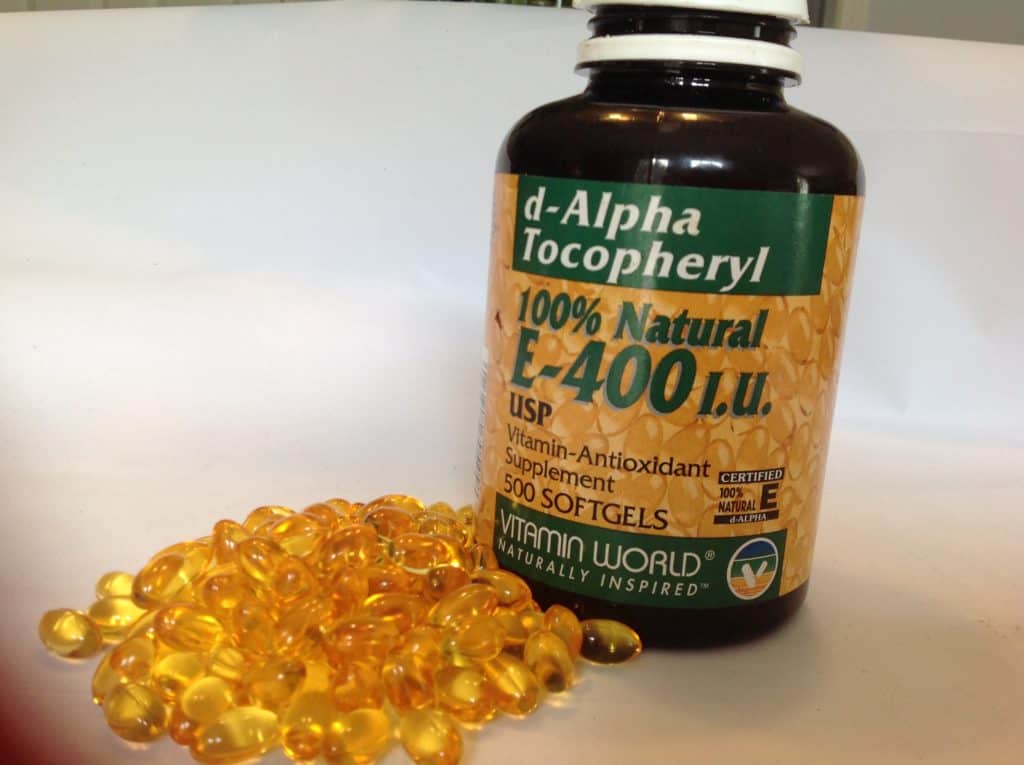Discover the power of Vitamins C and E as antioxidants for your aging eyes. As we age, our eyes undergo the effects of normal metabolism and UV radiation exposure. Fortunately, these two essential nutrients play a crucial role in preventing damage. By reducing the risk and slowing the progression of conditions like macular degeneration and cataracts, Vitamins C and E combat the harmful effects of free radicals on our vision.
First, What are Anti-oxidants?
Anti-‘ from Latin means ‘against’ or ‘opposed to,’ and ‘oxidant’ refers to reactive molecules produced during the body’s oxygen metabolism or from environmental factors. Essentially, antioxidants are our defenders against these harmful molecules.
Our bodies rely on oxygen for numerous vital functions, from enzyme reactions to energy production and even the biochemical processes essential for vision. However, these necessary functions also produce free radicals and oxidants as byproducts.
These reactive molecules are known culprits in the development of diseases. Fortunately, antioxidants step in to reduce the impact of free radicals, protecting our health and well-being.
Free radicals and oxidants in the body are created two ways:
- As a normal by-product of cell metabolism, or
- from external assaults to the body, like radiation and UV light, cigarette smoke, pollution, or medications.
The body is capable of producing its own antioxidants. However, when there is an imbalance—when there are more free radicals than antioxidants—a phenomenon known as oxidative stress takes place.
Oxidative stress signifies an excess of these reactive particles in the body, which have the potential to attack healthy cells. When healthy cells are under oxidative stress, they become dysfunctional, leading to degeneration. This degeneration, in turn, contributes to both aging and disease.
How to Get More Anti-oxidants:
The body naturally fights oxidative stress by generating its own antioxidants and relying on foods rich in naturally occurring antioxidants. These compounds act as scavengers, seeking out free radicals to prevent cellular harm.
However, in cases where an imbalance persists, and the body experiences significant oxidative stress, simply relying on a nutritional diet may not provide sufficient antioxidants. This is when supplementation becomes necessary to ensure the body has the support it needs to combat free radicals effectively.
The Role of Antioxidants: Insights from Clinical Studies
While numerous studies on eye diseases agree that oxidative stress plays a significant role in conditions like macular degeneration and cataracts, the specific impact of antioxidants remains a topic of ongoing research.
Macular Degeneration: The macula, responsible for fine details in central vision, is particularly vulnerable to oxidative stress due to its high oxygen consumption and constant exposure to UV light. Prolonged oxidative stress in this sensitive area, without sufficient antioxidants to counteract free radicals, contributes to age-related eye diseases.
Vitamin C and Vitamin E have been extensively studied for their potential to prevent and shield the macula from oxidative damage.
Cataracts: The lens of the eye not only focuses light onto the macula but also absorbs UV light. This absorption, however, leads to oxidative stress within the lens, contributing to the development of cataracts.
While the exact role of antioxidant supplements in reducing cataract risk remains uncertain, research indicates that vitamin C levels decrease with age, suggesting a potential link between declining lens antioxidants and cataract formation.
Dietary Sources of Antioxidants
Nothing new here: a nutritious diet rich in fruits and vegetables.
The Vital Role of Vitamin C: Your Anti-Aging Essential
Vitamin C stands out among antioxidants as a nutrient vital for numerous biochemical processes in the body, promoting overall health and boasting anti-aging properties. As an essential antioxidant, it actively scavenges free radicals generated by the body’s metabolism and environmental assaults, thereby reducing oxidative stress. Its benefits extend to cardiovascular health, immune system support, and the function of nerve cells.
Being water-soluble, Vitamin C is not stored in the body for future use, necessitating regular intake. Any excess Vitamin C is excreted through urine, emphasizing the importance of consistent consumption.
Vitamin C and Cataracts
Although cataracts are a natural part of aging and cannot be entirely prevented, Vitamin C has shown promise in studies for delaying and diminishing cataract progression. By reducing oxidative stress in the lens caused by UV light absorption, Vitamin C’s role becomes critical. Research indicates that Vitamin C levels decrease within the lens with age, potentially contributing to age-related cataract formation.
Vitamin C and the Retina
Vitamin C supports nerve health in both the brain and the eye, considering the eye as an extension of the brain. Concentrated in nerve tissues, Vitamin C is integral to nerve function and the reduction of oxidative stress within these tissues. This essential nutrient may aid in protecting retinal cells in conditions like age-related macular degeneration, glaucoma, and diabetic retinopathy.
Dietary Sources of Vitamin C
Often known as ascorbic acid, Vitamin C is commonly associated with citrus fruits and tangy orange chewable supplements. However, it’s not limited to citrus; other sources include mangoes, kiwis, papaya, melons, and berries like strawberries. Vegetables such as yellow bell peppers, broccoli, and tomatoes also offer substantial amounts of Vitamin C.
Supplementing Vitamin C
Daily recommended dosages typically range between 75 – 2000 mg/day (Mayo Clinic), varying based on factors such as age, health status, and diet. In the renowned AREDS study, which assessed the impact of vitamin supplementation on macular degeneration progression, participants were given 500 mg/day of Vitamin C.
Those who need to supplement their diet with vitamin C are:
- Smokers and alcoholics,
- athletes,
- older adults:
- those with poor circulation,
- those with digestive disease,
- those with liver disease, and
- those with a nutritionally deficient diet.
The Antioxidant Vitamin E
Vitamin E refers a group of fat soluble chemicals. While there are several forms, alpha- tocopherol is the form that the body recognizes as a nutrient. It is an important antioxidant to reduce the damage caused by free radicals and it is thought to help strengthen the immune system, blood, and cell membranes.
Dietary Sources of Vitamin E
Keep in mind that alpha-tocopherol is fat soluble indicating that dietary fats are a good source. Foods such as vegetable oils like olive, corn, and safflower oils, as well as the oils in nuts, seeds, and wheat germ. Almonds and sunflower seeds are known as sources high in vitamin E.
Vitamin E and Eye Health
The role vitamin E plays in the eye is one of protection as an antioxidant and support for nerve health.
Macular Degeneration. The retina is sensitive to changes in vitamin E levels. Cell membranes of retinal nerves are lipid based and are subject to lipid oxidation by free radicals. Vitamin E is thought to play a role in reducing the risk for progression of AMD by reducing lipid oxidation. It also reduces platelet aggregation (acts as an anti-coagulant) for maintenance of blood flow.
Vitamin E Supplementation
When listed on Supplement Facts labels, vitamin E is indicated by IU, which is International Units. This is a measurement indicating biological activity, not an actual measurement of the amount of vitamin E, which differs from when it is listed in milligrams (mg).
The American Food and Drug Administration does not require food labels to indicate the amount of vitamin E. The recommended dietary allowance (RDA) is 15 mg (22.4 IU) to 19 mg (28.4 IU). Most multivitamins have 22 to 38 IU. Supplements indicated as ‘Vitamin E’ will have as much as 400 IU. Vitamin E also comes in both natural and synthetic forms. The synthetic form is indicated as dl-alpha- tocopherol. No harm in ingesting the synthetic form, but it is thought not to be absorbed or utilized as readily as the natural, which is indicated as d-alpha-tocopherol (acetate or succinate).
Those who should be cautious about supplementing their dietary intake with vitamin E:
Those who receive treatments or medications which cause blood thinning, as high doses of vitamin E cam exacerbate blood thinning:
- Anticoagulant and antiplatelet medications
- Simvastatin and niacin
- Chemotherapy and radiotherapy.
A Well Known Study of Anti-oxidants Vitamin C and E, and Macular Degeneration and Cataracts
Vitamins C and E were a part of the Age-Related Eye Disease Study 2 (AREDS 2), which evaluated the effect of supplementing with vitamin C, E (400 IU/day), zinc, lutein, and zeaxanthin on the progression of age-related macular degeneration and cataracts.
The progression of AMD was decreased by 25% with this combination of supplements. The thought is that AMD is, in part, a result of poor nutrition. The importance of this study was that it showed that nutritional intervention can make a difference in reducing the progression of age=related eye disease.
Learn more about the AREDS 2 study:
3 Best Supplements for Prevention of Macular Degeneration
Other Anti-oxidant Nutrients s for Ocular Health:
- Carotenoids, esp: lutein, zeaxanthin, and meso-zeaxanthin
- Flavonoids, esp: Anthocyanins
- Lycopene
- Selenium
- Fatty acids: Omega 3, DHA and EPA
In the End…
The eye is particularly susceptible to age-related eye disease because of its high metabolic rate and exposure to UV radiation. The risk increases as we age. Dietary intake of these essential nutrients often falls below recommended levels. Anti-oxidants are key to not only decreasing the progression of age-related eye disease but important for prevention.
As with any other supplements, check with your doctor before launching into a supplement regiment high in antioxidants. While antioxidants are necessary for protection and prevention of disease, excessive dosing of some can be harmful.
Other important supplements for eye health:
Anthocyanins of Bilberry, Blueberry, Maqui berry, and Black Currant.


